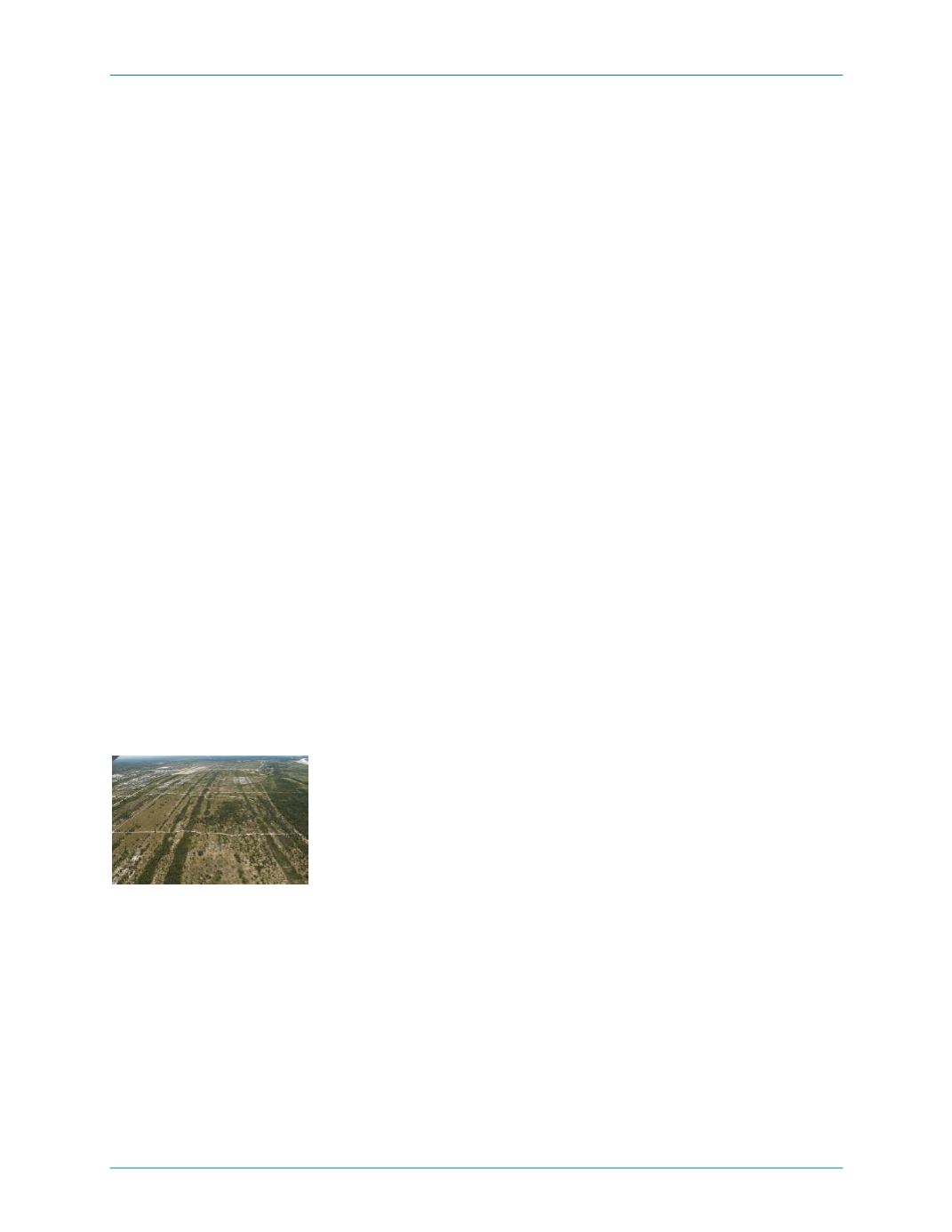
Summary
Environmental Context
The process plant is located about 2 km from the coast. The area is flat
with beach ridges extending north-south. Seasonal wetlands are located
in low-lying areas between many of the ridges. The elevation varies
between 6 and 10 masl. Vegetation within the region was once part of
an extensive coastal band of eastern lowland rainforest. Now, the
primary forests are gone at the plant site and in most parts of the coast.
They have been replaced with degraded secondary forest patches,
shrublands and grasslands, as a result of clearing and invasion by exotic
species.
The dominant vegetation at the plant site is a coastal shrubland/
grassland. The second most common vegetation is degraded residual
coastal woodland. Exotic tree species have altered species composition
and forest structure; however, there are still remnant species that once
existed here in greater numbers. The third most common vegetation is a
beach ridge complex. Vegetation within this type varies with position. It
is characterized by coarse grass on the ridges and dense wetlands
vegetation on organic soils within the low areas.
Three endangered or vulnerable IUCN-listed species were found in the
area. In total, 185 flora species were inventoried. Due to the disturbed
nature of the site, many species are invasive and common within the
region. No locally endemic species were identified.
All terrestrial habitats are already disturbed and support low numbers of
fauna species. Four amphibian and six reptile species were recorded.
Thirty-four bird species were observed, of which two were IUCN-listed
and one CITES-listed.
Aerial view of the plant site
The plant site contains only a few seasonal wetlands. Outside the
property boundary, permanent watercourses which are associated with
plant infrastructure (adjoining pipelines and access roads) include the
Pangalanes Canal (a series of freshwater and brackish lakes, lagoons
and rivers that were joined for commercial traffic) which is only a few
hundred metres from the sea, the Ivondro River south of the plant site
and an unnamed tributary to the Ivondro River.
In the Ivondro River and Pangalanes Canal, several fish species and
invertebrate species are commonly harvested by local fisherman. In the
Ivondro River, exotic species such as tilapia were the most commonly
harvested fish. Some smaller fish along with crustaceans were also
captured in reed traps.
January 2006
Ambatovy Project — 26


